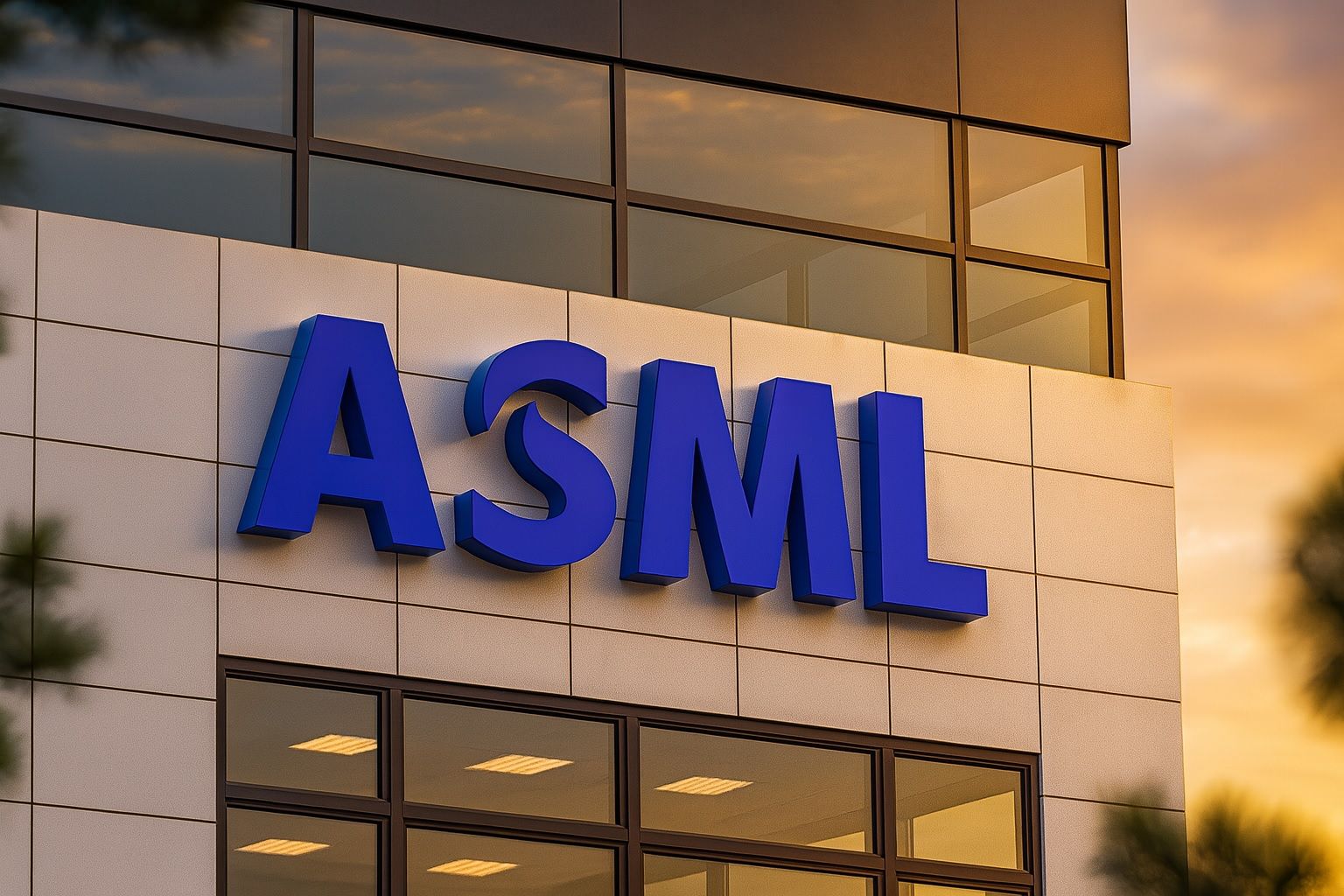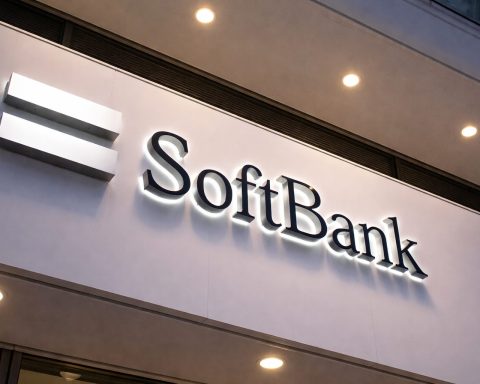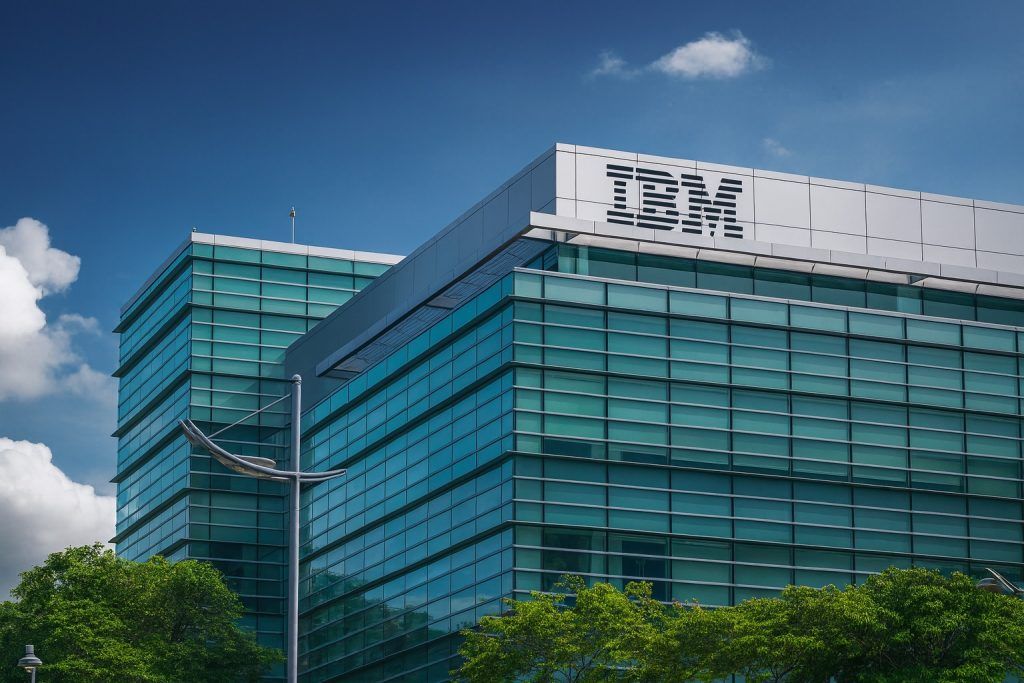- Record Rally: ASML shares have climbed to near-record highs. On Oct 15, 2025, ASML’s ADS traded around €847 (≈$980) [1], up sharply from recent levels. The stock had gained roughly +32% since early September [2], far outpacing its sector peers. (For context, the NASDAQ ADS closed at $1,009.81 on Oct. 15, up 2.7% that day [3].)
- Strong Q3 Results: In mid-October, ASML reported robust third-quarter 2025 financials. Revenue was €7.516 billion with net income €2.125 billion [4], essentially in line with forecasts. New orders (bookings) hit €5.399 billion [5], just above estimates and boosting ASML’s record backlog (about €33 billion) [6].
- Guidance & Outlook: Management reiterated roughly +15% sales growth for full-year 2025 and forecast a “very strong” Q4 [7]. However, it warned that demand from China – nearly one-third of 2025 orders – is set to “decline significantly,” implying 2026 sales may be flat year-over-year [8] [9]. CEO Christophe Fouquet and CFO Roger Dassen stressed this slowdown in China is “normalization” after past booms [10].
- AI Investment: ASML is aggressively targeting the AI market. In September it agreed to invest €1.3 billion in French AI startup Mistral AI (about an 11% stake) [11]. ASML will integrate Mistral’s models into its lithography tools – a deal Fouquet called “strategic” and “value-enhancing” [12]. ING analyst Jan Frederik Slijkerman says this partnership approach makes sense: “for ASML it is probably easier to develop AI-based products through a partnership than to do this in house” [13].
- Analyst Sentiment: Wall Street remains generally bullish. The consensus rating is Moderate Buy with an average 12-month target around $975–$1,000 [14]. Many firms have recently lifted price targets – e.g. Susquehanna to $1,150 and JPMorgan to $1,175 [15] [16] – on expectations of sustained AI-driven growth. However, some note that ASML trades at a high valuation (~28–30× 2025 EPS) and urge caution if AI capex peaks.
- Market Leadership: ASML dominates the advanced lithography market (~90% share) [17]. It reported Q2 2025 sales of €7.7 billion and net income €2.3 billion [18], with roughly €7 billion in cash on the balance sheet [19]. In 2025 it raised its dividend ~17% (to about $1.85 per ADS) and has been buying back stock (~€1.4B repurchased in Q2) [20] [21]. Its order book (~€33 billion) gives visibility well into 2026.
- Geopolitical Risks: U.S.-China tensions cast a shadow. ASML remains barred from selling its most advanced EUV machines to China under current export controls [22]. New Chinese export curbs on rare-earth metals (used in ASML’s tools) “might lead to weeks-long delays” for shipments [23]. A recent U.S. congressional report on chip-equipment sales briefly sent ASML’s stock down ~7% in early Oct [24]. Wall Street will be watching how such headwinds affect future sales.
Stock Performance & Market Rally
ASML’s stock has been on a tear in October 2025. After a late summer rally, shares continued climbing following the Q3 report. For example, on Oct. 15 the NASDAQ-listed ASML ADS closed at $1,009.81 – a 2.7% gain on the day [25] – and hit intraday highs above $1,030. By the Oct. 17 close the ADS price was roughly $1,029 (≈€880), just shy of the record $1,059 set earlier in the year [26]. This rally has far outpaced the broader semiconductor index: since early September ASML is up ~+32% [27]. The surge reflects robust demand for its cutting-edge chipmaking tools, especially driven by artificial-intelligence (AI) chip production. Long-term technical indicators are strong, but analysts note that some short-term momentum gauges (RSI, etc.) are elevated [28], so a consolidation could occur after this run.
Q3 Earnings and Guidance
On Oct. 15, ASML reported solid Q3 2025 results. Third-quarter net sales came in at €7.516 billion with net income €2.125 billion [29], essentially in line with analysts’ expectations. (This extended ASML’s streak of meeting or beating consensus for eight straight quarters.) Crucially, new orders (bookings) totaled €5.399 billion [30], slightly above forecasts, indicating that major chipmakers are still planning capacity expansions. As CEO Fouquet noted, chipmakers are pushing the envelope for AI: “lithography intensity” – the number of exposures per chip – “continues to rise as chipmakers push the envelope on AI processors and advanced logic” [31]. This highlights that demand for ASML’s EUV machines is strong in AI and advanced logic segments.
The results came with a mixed message on the outlook. ASML reaffirmed its roughly +15% sales growth target for 2025 and guided a “very strong” Q4, with revenue projected at €9.2–9.8 billion [32]. However, management also struck a cautious tone for 2026. China’s orders – nearly one-third of 2025 volume – are expected to “decline significantly” next year [33]. CFO Roger Dassen emphasized that this anticipated drop is a “normalization” after previous boom years, not stockpiling [34]. In practice ASML said 2026 revenue will likely be flat to slightly up, a sharp deceleration from prior years of double-digit growth. This cautious outlook initially worried some traders – Degroof Petercam analyst Michael Roeg commented that ASML “could have been a stronger message” on next year’s growth [35]. However, JPMorgan analysts were more sanguine, arguing “the bearish view of a worse-than-expected 2026 will be put to rest” and that investors should focus on ASML’s growth potential in 2027 [36].
Several investors echoed a resilient long-term view. Han Dieperink, CIO at Aureus, said the quarter “pointed to solid demand” and he was “not worried” about the upcoming year [37]. In effect, the message is that ASML’s backlog and technological leadership still underlie strong future sales, even if the China slowdown presses on near-term growth. ASML has left room to revise guidance after seeing how trade issues play out; analysts expect more clarity at its January 2026 investor day.
AI Investment and Strategic Moves
ASML is leveraging the AI wave on multiple fronts. The biggest headline was the €1.3 billion investment announced in September for France’s Mistral AI. This deal makes ASML Mistral’s largest shareholder (about 11% stake) and gives ASML a board seat. ASML will embed Mistral’s cutting-edge AI models in its lithography equipment and product development [38]. CEO Fouquet lauded the tie-up as “strategic” and “value-enhancing” for customers [39]. As Reuters notes, this partnership pairs Europe’s top semiconductor equipment maker with a rising AI champion, boosting Europe’s technology sovereignty [40] [41].
Industry experts see big upside in such cooperation. ING analyst Jan Frederik Slijkerman points out that ASML is well-positioned to pick partners, and “it is probably easier to develop AI-based products through a partnership than to do this in house” [42]. In other words, ASML can focus on its core chip-tool expertise while integrating AI advances via alliances. In parallel, ASML recently named 25-year veteran Marco Pieters as Chief Technology Officer (effective 2026), underscoring its emphasis on innovation. Analysts say these moves align with ASML’s goal to stay ahead in next-generation lithography (including upcoming high-NA EUV machines) and to ensure its tools best serve AI-oriented chipmakers.
China and Geopolitical Headwinds
Geopolitical frictions remain a key wildcard for ASML. Under U.S.-led export controls, ASML is barred from shipping its most advanced EUV lithography systems to China [43]. This has already dented China’s share of ASML sales. New Chinese export curbs on rare-earth metals (vital inputs for chip-equipment) also emerged in October. Industry reports warn these curbs “might lead to weeks-long delays” for ASML machine shipments, as export licenses and approvals take longer [44]. Such delays could briefly tighten supply or defer revenue into 2026.
Recently, ASML’s stock briefly dipped after a U.S. congressional report on chip-equipment exports caused market jitters. The report, released in early October, prompted a roughly 7% intraday selloff before stocks recovered [45]. Investors will be watching how trade policy evolves, including any possible U.S. tariffs on EU goods (which ASML warned could raise machine prices). For now, ASML is said to be lining up contingency plans. Any easing of restrictions or clarity in 2026 could reignite Chinese demand, providing upside to the current cautious outlook.
Analyst Perspectives and Forecasts
Most analysts remain constructive on ASML’s long-term story. Wall Street’s consensus rating is Moderate Buy, reflecting confidence in ASML’s monopoly-like role in chipmaking. The average 12-month price target among analysts is roughly $975–$1,000 [46]. Several investment banks have recently bumped their targets: for example, JPMorgan to $1,175 and Susquehanna to $1,150 [47] [48]. These firms cite ASML’s irreplaceable position in enabling AI chips and its massive equipment backlog.
That said, some caution remains warranted. At a price near $1,000+ (roughly 30× expected 2025 EPS), ASML is richly valued. A few strategists warn that if the AI spending surge were to peak, growth could slow sharply. ASML itself seemed to take a prudent tone for 2026, prompting comments like Degroof’s Roeg: “It could have been a stronger message” [49]. Ultimately, many analysts expect ASML to “beat and raise” on Q4 results (given strong AI data-center buildouts) [50], but note that the bar for 2026 is now lower.
Looking Ahead
In sum, ASML’s late-2025 outlook is bright yet nuanced. Its fundamentals are solid – a dominant 90% market share in EUV lithography, ultra-high gross margins (~54%), a robust balance sheet (~€7B cash) and healthy profits [51] – underpin confidence in continued growth. The stock’s rally reflects that, with ASML near record highs. However, investors and analysts will pay close attention to the interplay of AI-driven demand and geopolitical constraints. “We believe the bearish view will be put to rest,” suggested JPMorgan analysts, who expect investors to “focus on the extent the company can grow in 2027” [52].
For now, ASML appears to be telling markets that 2026 will be a transitional year at best – a pause rather than a fall. A stronger-than-feared recovery in Chinese orders, or continued acceleration of AI chip spending, could quickly swing sentiment back bullish. As one observer put it, ASML’s unique technology and multi-year backlog give it a “moat” in the global chip industry [53]. The coming months (and the Q4 reports/2026 guidance updates) will reveal whether the stock’s recent euphoria is justified or due for a reality check. Either way, ASML’s story – at the crossroads of AI and geopolitics – remains one of the market’s most closely watched.
Sources: Data and quotes are drawn from ASML’s official filings and press releases (as cited), and recent financial news and analysis [54] [55] [56] [57] [58] [59]. These include reports by Reuters and technology-focused outlets, as well as industry analyst commentary. All figures are as of mid-October 2025.
References
1. ts2.tech, 2. ts2.tech, 3. www.marketbeat.com, 4. ts2.tech, 5. ts2.tech, 6. ts2.tech, 7. ts2.tech, 8. ts2.tech, 9. ts2.tech, 10. www.reuters.com, 11. ts2.tech, 12. ts2.tech, 13. www.reuters.com, 14. ts2.tech, 15. ts2.tech, 16. www.marketbeat.com, 17. ts2.tech, 18. ts2.tech, 19. ts2.tech, 20. ts2.tech, 21. ts2.tech, 22. ts2.tech, 23. ts2.tech, 24. ts2.tech, 25. www.marketbeat.com, 26. ts2.tech, 27. ts2.tech, 28. ts2.tech, 29. ts2.tech, 30. ts2.tech, 31. ts2.tech, 32. ts2.tech, 33. ts2.tech, 34. www.reuters.com, 35. ts2.tech, 36. www.reuters.com, 37. www.reuters.com, 38. ts2.tech, 39. ts2.tech, 40. www.reuters.com, 41. www.reuters.com, 42. www.reuters.com, 43. ts2.tech, 44. ts2.tech, 45. ts2.tech, 46. ts2.tech, 47. ts2.tech, 48. www.marketbeat.com, 49. ts2.tech, 50. ts2.tech, 51. ts2.tech, 52. www.reuters.com, 53. ts2.tech, 54. ts2.tech, 55. ts2.tech, 56. www.reuters.com, 57. www.reuters.com, 58. www.reuters.com, 59. www.marketbeat.com







